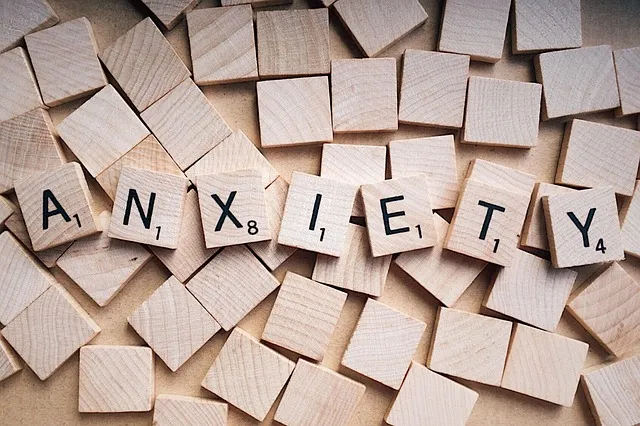The Lone Tree Kaiser Permanente behavioral health center places paramount importance on risk assessment and harm minimization in its mental health services. Through comprehensive analyses, the center identifies internal and external vulnerabilities, proactively addressing factors like patient histories, social determinants of health, and stigma to ensure a safe environment. Adhering to evidence-based practices and guidelines, they implement multi-faceted strategies including workshops, crisis protocols, and public awareness campaigns. This holistic approach enhances access to quality care, empowers patients with coping skills, and promotes overall well-being within the Lone Tree Kaiser Permanente behavioral health center.
At Lone Tree Kaiser Permanente Behavioral Health Center, risk assessment and harm minimization planning are cornerstone practices ensuring patient safety and well-being. This comprehensive guide explores the critical components of these processes, from understanding intricate risk factors at the facility to developing robust strategies for mitigation. We delve into identifying potential harms, crafting effective plans, implementing successful management tactics, and continually evaluating progress in behavioral health care.
- Understanding Risk Assessment at Lone Tree Kaiser Permanente Behavioral Health Center
- Identifying Potential Harms and Vulnerabilities
- Developing a Comprehensive Harm Minimization Plan
- Implementation Strategies for Effective Risk Management
- Continuous Evaluation and Improvement in Behavioral Health Care
Understanding Risk Assessment at Lone Tree Kaiser Permanente Behavioral Health Center

At Lone Tree Kaiser Permanente Behavioral Health Center, risk assessment is a cornerstone of their comprehensive mental health services. It involves a systematic analysis of potential hazards and vulnerabilities within the center’s operations, patient populations, and surrounding community. This process identifies factors that could lead to adverse outcomes, enabling proactive measures to mitigate risks effectively. By employing evidence-based methodologies, the center ensures that its practices align with the latest Mental Health Policy Analysis and Advocacy guidelines, fostering a safe environment for all individuals seeking behavioral health support.
The Lone Tree Kaiser Permanente Behavioral Health Center’s risk assessment strategy encompasses various aspects, including the implementation of robust Community Outreach Program Initiatives and the provision of Crisis Intervention Guidance. Through these efforts, they aim to anticipate and address potential risks before they escalate. This proactive approach not only enhances patient safety but also contributes to the overall well-being of the community, ensuring that everyone has access to quality mental health care without compromise.
Identifying Potential Harms and Vulnerabilities

Identifying potential harms and vulnerabilities is a critical step in risk assessment for any healthcare facility, especially those offering behavioral health services like the Lone Tree Kaiser Permanente center. This process involves a thorough examination of various factors that could contribute to adverse outcomes for patients. For instance, at a behavioral health center, risks may arise from individual patient histories, mental illness symptoms, or social determinants of health.
At-risk individuals often face challenges related to emotional regulation and coping skills development due to their mental health conditions. Additionally, the stigma associated with mental illness can exacerbate these issues. The Lone Tree Kaiser Permanente behavioral health center, through proactive harm minimization planning, aims to address these vulnerabilities by implementing strategies such as enhanced support networks, tailored therapy options, and Mental Illness Stigma Reduction Efforts to foster a more inclusive environment, thereby promoting better patient outcomes and overall well-being.
Developing a Comprehensive Harm Minimization Plan

Developing a Comprehensive Harm Minimization Plan at the Lone Tree Kaiser Permanente behavioral health center involves a multi-faceted approach centered on risk assessment and proactive harm prevention. Mental health professionals must conduct thorough risk assessments for all patients, meticulously evaluating their history, current symptoms, and potential triggers. This process encompasses not just identifying risks but also understanding the unique emotional healing processes of each individual.
By integrating positive thinking strategies into the harm minimization plan, the Lone Tree Kaiser Permanente behavioral health center ensures a holistic approach to patient care. This includes implementing early intervention protocols, providing accessible crisis management resources, and fostering an environment that encourages open communication and emotional expression. Such measures aim to not only mitigate risks but also empower patients with tools for long-term resilience and well-being.
Implementation Strategies for Effective Risk Management

Implementing effective risk management strategies at the Lone Tree Kaiser Permanente behavioral health center involves a multi-faceted approach tailored to address various potential hazards and their impact on patient care and staff well-being. One key strategy is integrating Stress Management Workshops Organization into the existing program, focusing on mindfulness techniques, relaxation exercises, and resilience-building activities. These workshops not only enhance individual coping mechanisms but also foster a supportive work environment, thereby reducing stress-related risks.
Additionally, promoting Anxiety Relief through evidence-based communication strategies is vital. Encouraging open dialogue among staff, patients, and their families can alleviate concerns, foster trust, and improve overall satisfaction. Equally important is ensuring clear crisis intervention protocols and regular training sessions for all personnel to handle emergencies effectively while minimizing harm. This comprehensive approach, incorporating Communication Strategies as a cornerstone, ensures the Lone Tree Kaiser Permanente behavioral health center maintains a safe, nurturing atmosphere conducive to recovery and well-being.
Continuous Evaluation and Improvement in Behavioral Health Care

At Lone Tree Kaiser Permanente behavioral health center, continuous evaluation and improvement are at the heart of our service delivery model. We believe in an ongoing cycle of assessment, intervention, and reflection to ensure we provide the most effective care possible. This approach is driven by a commitment to public awareness campaigns development, where we educate both our patients and the wider community on mental health issues and coping skills development. By fostering open dialogue, we aim to reduce stigma and encourage early intervention, ultimately minimizing harm.
Through regular reviews of our practices, we integrate new research and evidence-based strategies into our trauma support services. This dynamic process allows us to adapt quickly to evolving needs in behavioral healthcare. We recognize that each individual’s journey toward recovery is unique, so our continuous evaluation ensures personalized care plans that promote long-term well-being.
The implementation of robust risk assessment and harm minimization planning at the Lone Tree Kaiser Permanente Behavioral Health Center is a game-changer in ensuring patient safety and well-being. By understanding the intricacies of risk assessment, identifying potential harms, and developing comprehensive strategies, the center can navigate through complex challenges. Effective implementation strategies and continuous evaluation further solidify its commitment to delivering high-quality care. This approach not only protects patients but also enhances the overall effectiveness of behavioral health services provided at the Lone Tree Kaiser Permanente Behavioral Health Center.






